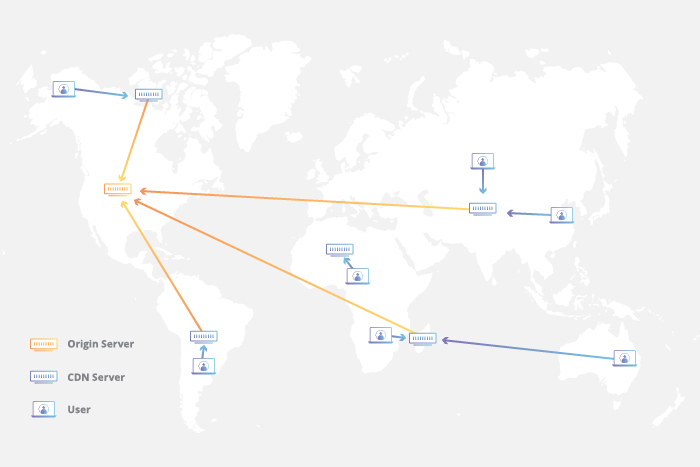How to use a CDN, and why you should
The first factor your potential customers will see about your business is the speed at which your site loads. Using a CDN can drastically improve the loading of rich media like images, and today we’ll find out how.
If you’re looking at getting your own site, check out our incredibly affordable options, starting at just 1,50 a month!
Table of Contents
What is a CDN?
A Content Delivery Network is a worldwide network of fast servers to quickly deliver rich media to visitors of a webpage. The main purposes of using one are improved website loading times, reducing bandwidth used on the hosting server and increasing redundancy.
What a CDN isn’t is a web host. While they share many features, a CDN simply supplies parts of a website. Aside from this, options like Cloudflare can even supply visitors of a unreachable site with a cached version of said site. Check this article if you want to improve your own sites using Cloudflare.
How does a CDN work?
Simply put, a CDN is a network of connected servers that serve the content as quickly as possible. When starting to use a CDN, the media in your site is sent to every server on this worldwide network. Once every server has this media in its ‘cache’, it is ready to serve it to visitors. You can learn more about what caching is here.
By having these servers places in strategical places, requests for the media can be routed to the nearest (and fastest) server from the visitor. This way the content will always be served from the fastest access point.

Because the server from which the data is fetched is always chose by, your site will always load fast no matter the distance between the visitor and the host server.
Should you use a CDN?
CDN’s can be beneficial for many reasons. Here are some reasons summed up:
- Improve website loading times
- Reduce bandwidth on the host server
- Improve website security (like DDoS mitigation)
- Improve website latency
Whether using a CDN is worth it for your personal site depends on many factors. The best way to decide for yourself is to ask if the cost outweighs the benefits. While the benefits are many, the prices can be high too. A top choice like Stackpath will set you back about $20/month. In the case of a hobby project this cost is hard to justify, while it’s a excellent choice for a company.
Options like Cloudflare or Jetpack’s Site Accelerator have a free tier that will get you going with speeding up your site without spending a penny, though they lack in premium features.
Final thoughts
Whether you decide to start using a CDN or not, you should now have some basic knowledge about what they can do for you, and how they work. If you’re interested in acquiring one, the options linked in this article are great starting points.
Do you have any questions, or experience using these services? Let us know!





